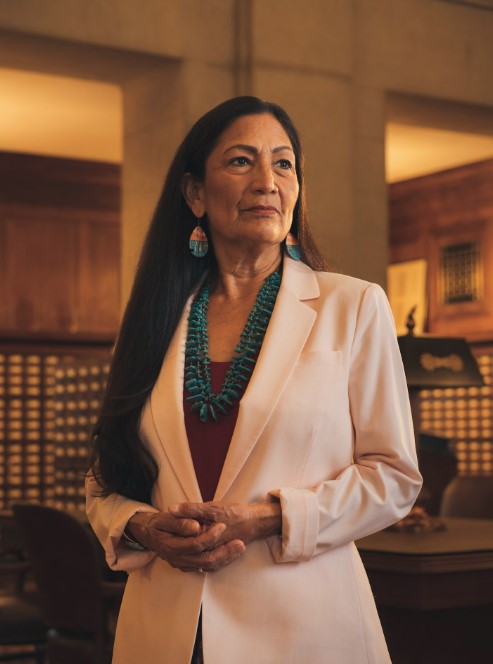Interior Secretary Deb Haaland’s Charged Mission of Healing
Originally Published by Karen Heller for The Washington Post
One after another, the survivors rose, shaking, often in tears, some singing or chanting to share their stories of childhood horror.
“I will grieve with you. I will weep with you. I will feel your pain, as we mourn what was lost,” said Interior Secretary Deb Haaland, sitting before them in the Mille Lacs Band of Ojibwe community gym last month.
An enrolled member of the Pueblo of Laguna, Haaland is the first Native person to serve as a Cabinet secretary, leading a department that oversees a fifth of U.S. land and was long charged with the systematic removal of Indigenous people from their tribal homelands.
“You have done more for Indian Country than any secretary who came before you. Others before you have tried to whitewash the history of war crimes against our people,” Mille Lacs Band Chief Executive Melanie Benjamin told her, addressing an audience of about 150 before a Road to Healing event in June addressing the brutal legacy of Indian boarding schools.
Haaland keeps her hair long, true to Indigenous custom. Native jewelry is a constant — thick silver necklaces, shoulder-sweeping earrings. She was sworn in wearing a Native ribbon skirt, and her office doubles as a gallery of Indigenous art and artifacts. By comparison, Donald Trump’s first interior secretary, Ryan Zinke, arrived his first day astride a bay roan named Tonto and filled the same room with a surfeit of taxidermy.
“Representation matters, not only representation mattering for Indigenous people, but also for people who are just everyday Americans,” she said over coffee before the Ojibwe meeting last month. “I’m feeling like I represent those people, too, right?”
